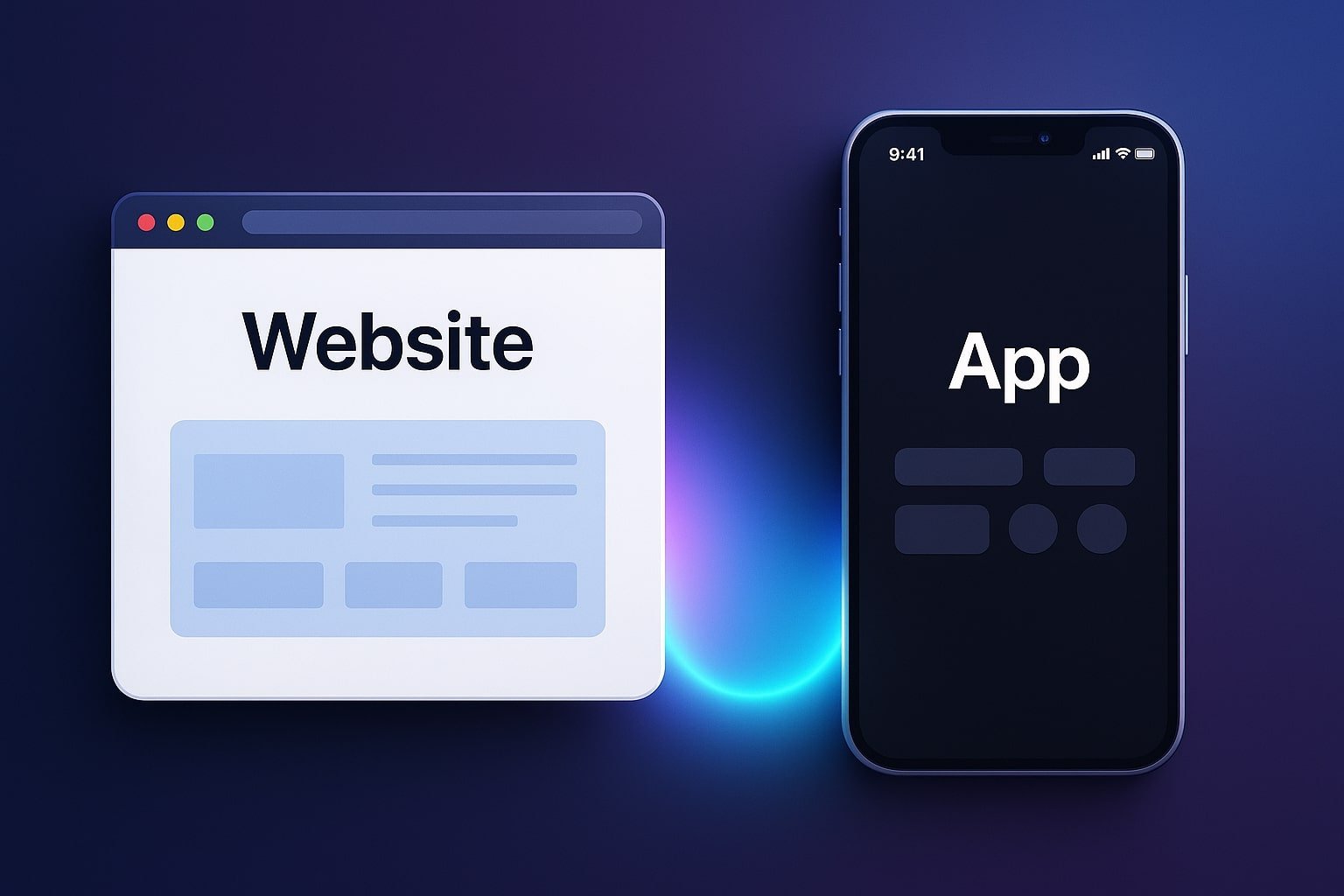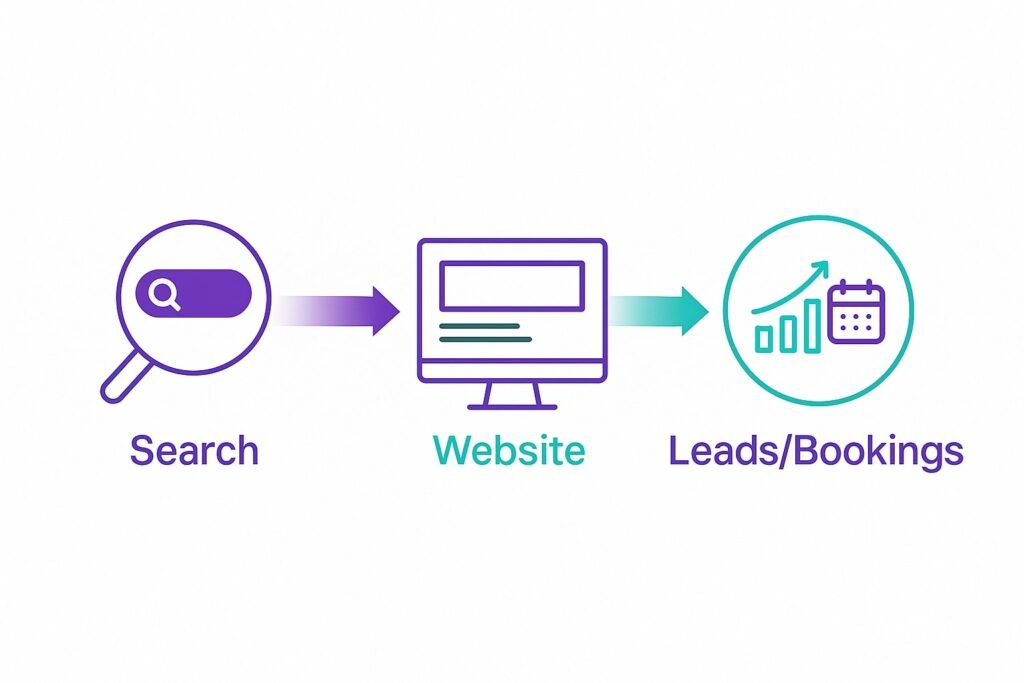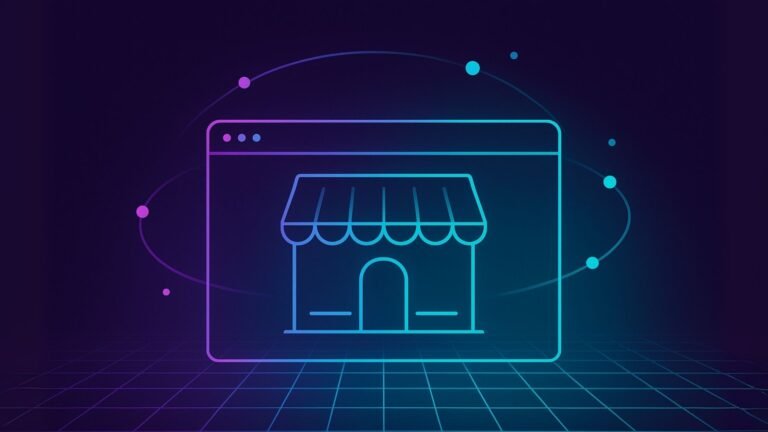
Should you launch a website, a mobile app, or both? Your choice affects discoverability, cost, speed to market, and long-term engagement. Use this research-backed guide to decide what to build first.
Quick facts to frame the decision
- Search is the top global way people discover brands (32.8%). Source
- People spend huge time in apps and consumer spend reached about $150B last year. Source
- Most small businesses already have a website (83%). Source
Websites vs apps: the core differences
Accessibility and reach. A website loads on any modern browser and can rank in search. Apps require installation before value is delivered.
Cost and time to market. Websites usually ship faster with lower upfront cost. Apps take longer and need larger investment, but unlock deeper experiences.
Capabilities. Apps excel at push notifications, camera, GPS, secure wallets, offline, and background tasks. Websites win on zero friction and shareable links.
Maintenance. Web updates go live instantly for everyone. Apps require releases and store approvals, which adds operational overhead.
Website first: when it is the smarter move
- Validate quickly. Launch in weeks, measure demand, and iterate. This is ideal for new services or local businesses.
- Maximize discoverability. Since search is a top discovery channel, a well-structured site and content plan compound over time.
- Control costs early. A fast, credible site with clear funnels, booking, or checkout often delivers ROI before you need an app.
Example. A clinic, consultancy, or services firm will usually win more with an SEO-ready site, reviews, service pages, and online booking, rather than asking first-time visitors to install an app. For more context, see Why Every Business Needs a Website in 2025.

When an app makes more sense
- Engagement and retention at scale. Users who receive push in their first 90 days show about 3x higher retention than those who receive none. Source
- Device-level features. Delivery tracking, on-device scanning, secure payments, richer offline flows, and background tasks are more natural in apps.
- Habitual usage. If customers engage daily or weekly, an app reduces friction and enables deeper personalization and loyalty features.
Hybrid strategy: website now, PWA next, native app later
Many teams succeed with a staged approach:
- Launch a website for reach, SEO, credibility, and conversion.
- Add a Progressive Web App (PWA) for installability and offline caching where it helps most.
- Build a native app once you have traction and feature depth justifies it.
Real-world results. Case studies report strong gains from PWAs, such as AliExpress and Alibaba improving conversions after shipping PWA experiences.
Decision framework
| Criterion | Favors website | Favors app |
|---|---|---|
| Time to market | Launch in weeks with lower complexity | Longer build and QA plus store steps |
| Budget | Lower initial cost bands common for SMB | Higher average cost and ongoing maintenance |
| Discoverability | SEO and shareable URLs help you get found | Store listings help later, but installs add friction |
| Engagement | Email, SMS, and web push on desktop | Deep personalization and push lift sessions |
| Device features | Improving via browser APIs, still limited | Camera, GPS, sensors, wallets, background tasks |
| Offline | Possible with PWA and caching for defined flows | Rich offline and background sync |
| Scale and loyalty | Great for acquisition and trust | Best when you have recurring high-value users |
Pick a roadmap
Roadmap A: Services business.
Phase 1: fast, SEO-ready site with booking and lead funnels.
Phase 2: add a lightweight PWA for installability and speed.
Phase 3: native app once you have repeat usage and want push, loyalty, or advanced features.
Roadmap B: Product or marketplace.
Phase 1: marketing site plus web checkout to validate demand.
Phase 2: app for push re-engagement, saved carts, on-device payments, and post-purchase retention.
Conclusion
Choose a website when you want reach, speed, and SEO-driven growth. Choose an app when engagement, personalization, and device features drive value. Many successful companies start web-first, add a PWA, then invest in a native app once they have traction.
Cybersynq can help you decide with an evidence-based audit of your audience, funnel, and goals, then build the right thing in the right order. Let’s plan the smartest path for your product. You can also explore our services.
Sources
- DataReportal. Digital 2025: Brand discovery by channel. https://datareportal.com/reports/digital-2025-sub-section-brand-discovery
- Sensor Tower. State of Mobile 2025: Time spent and consumer spend. https://sensortower.com/state-of-mobile-2025
- Clutch. The State of Small Business Websites in 2025: 83% have a website. https://clutch.co/resources/state-of-small-business-websites-2025
- Airship. Push Notification Benchmarks: ~3x retention for users receiving push in the first 90 days. PDF
- web.dev case studies. PWA results for AliExpress and Alibaba. AliExpress • Alibaba
